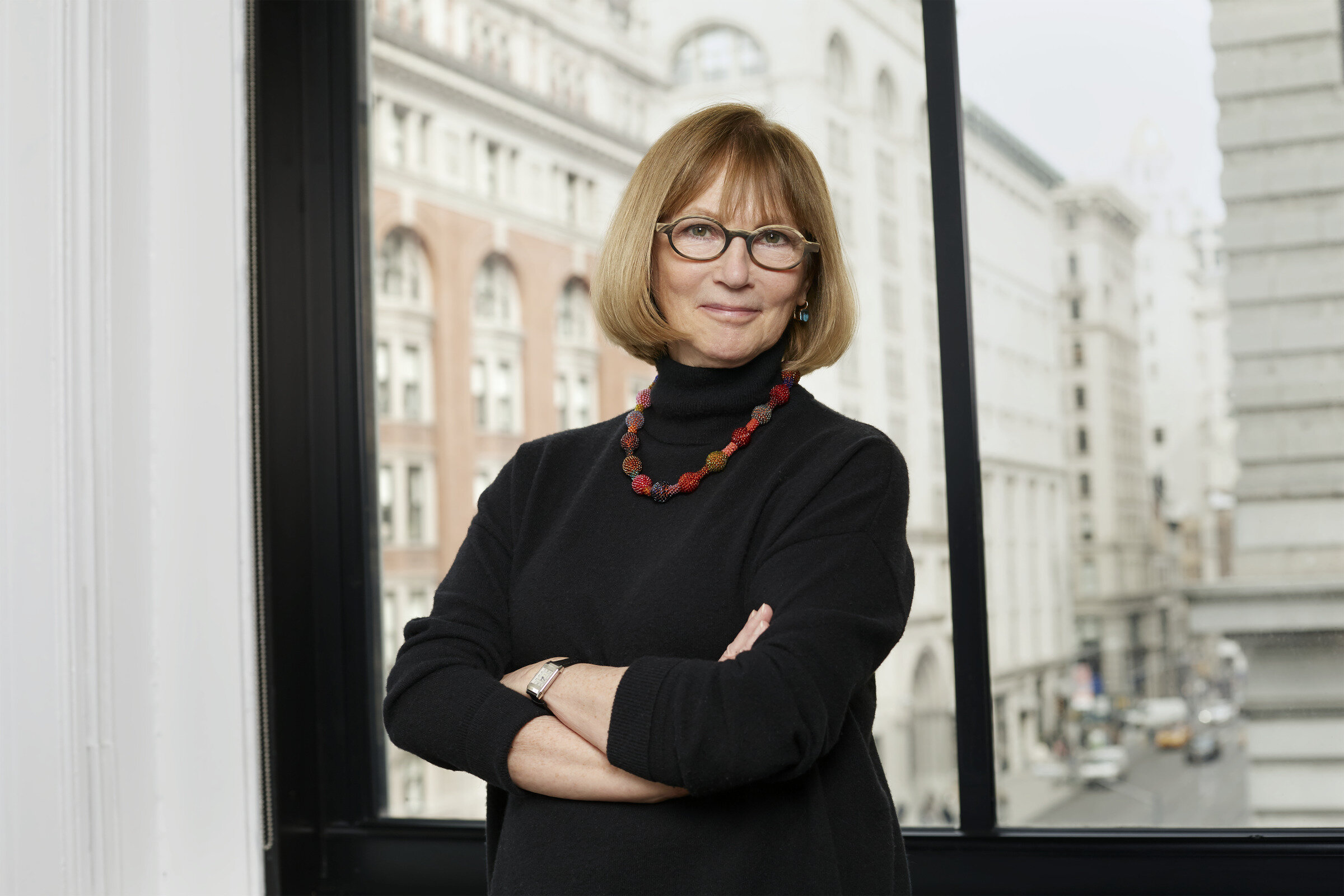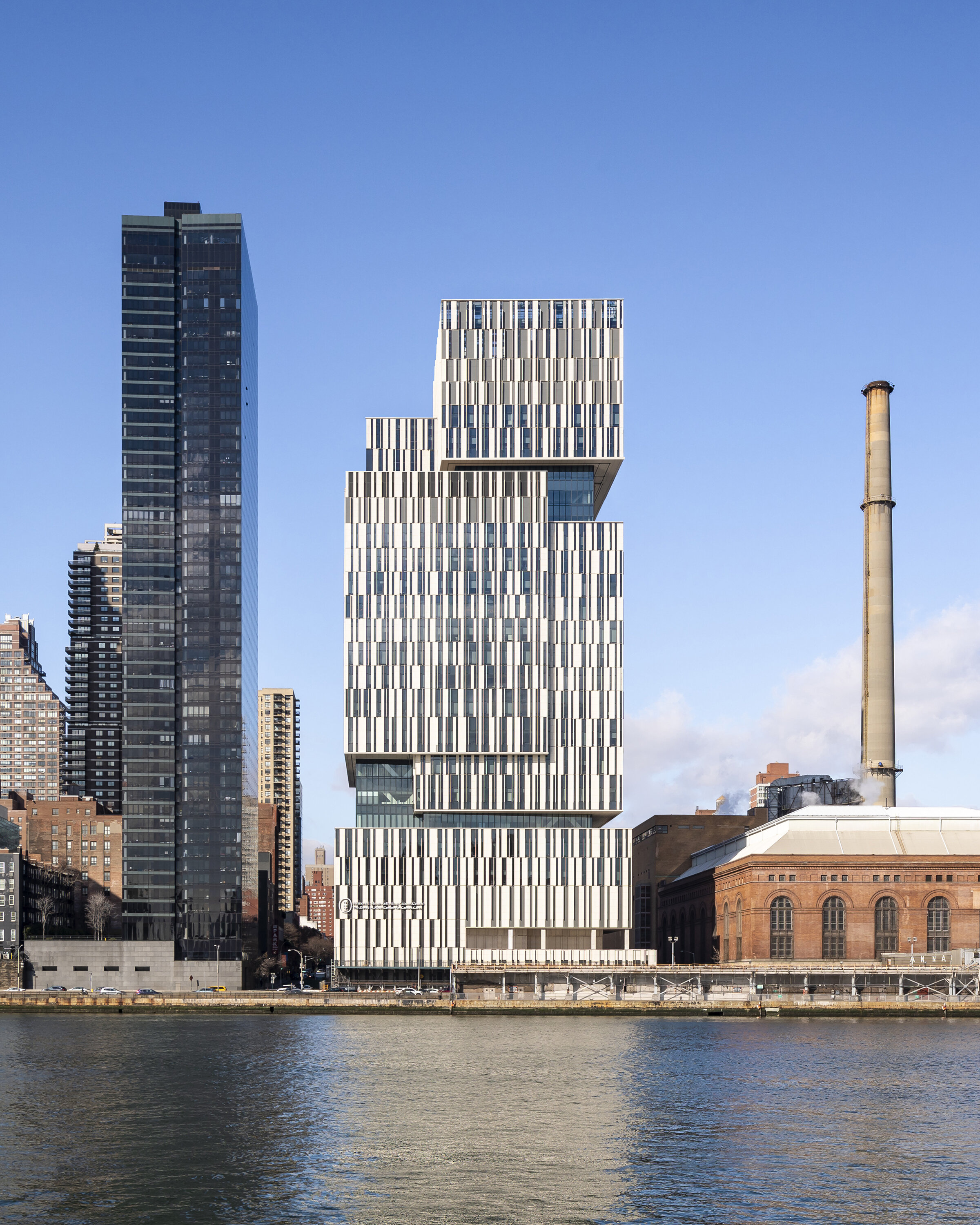Improving Lives: Mary-Jean Eastman on Firm Growth, Depth of Expertise, and Assets
By Julia Gamolina
Mary-Jean Eastman, FAIA, MRAIC, is the Co-Founder and Vice-Chair of Perkins Eastman. When Mary-Jean Eastman entered architecture school in 1966, fewer than 10 percent of her classmates were women. Today she is proud that women lead the majority of her firm’s studios. She and Brad Perkins, FAIA, co-founded Perkins Eastman in 1981. Mary-Jean’s early experiences led to her career-long commitment to designing programmatically complex buildings.
In her almost 40-year career, she has found her greatest opportunities with institutional buildings where her clients were often women. Initially, Mary-Jean completed several award-winning public buildings for the City of New York, and for the past 25 years, has focused largely on healthcare projects that enable advances in patient-centered care. She earned her B.Sc. Arch from McGill University in her hometown, Montreal, and a Dip Arch. and a MSc. Arch. from University College London. In her interview, Mary-Jean talks about growing her firm, advising young architects to explore all the different possibilities in front of them.
JG: How did your interest in architecture first develop?
MJE: My dad wanted to be an architect. Unfortunately, that wasn’t an option during the Depression. When I was four, I spent many weekends with him as he was building our house. I always had architectural drafting tools growing up.
MSK Koch Center for Cancer Care. Photography by Andrew Rugge
MSK Koch Center for Cancer Care. Internal Inpatient Infusion Room. Photography by Chris Cooper.
What did you learn about yourself in studying architecture?
As a girl who was never encouraged to pursue architecture growing up, my success in engineering courses was a revelation.
How did you get your start in the field?
My graduate school professor at University College London offered me a summer internship working on the initial programming studies for the new British National Library. It started my life-long interest in programmatically complex buildings. My professor was Mary Jane Long, the only female instructor I ever had in architecture school. She was a Yale architecture graduate and a beloved professor there for decades. She started calling herself “MJ” when she applied to Yale because she knew they probably wouldn’t admit a woman.
“...we realized we needed to grow to a significantly larger size to be able to deliver real depth of expertise in several different markets.”
Walk me through your career steps chronologically, focusing on significant moments and key milestones.
For my first two years, I worked on the facilities for the 1976 Olympic Games in Montreal. We worked in an early “Big Room” with the construction manager and all the engineering disciplines. It was an excellent opportunity to understand the full design and construction process. At 28, I was the facility manager of the Shooting venue and could visit the other venues during the games — a great experience.
At the end of the Olympics, I moved to New York where my first job was working for New York State on the City’s effort to pursue the 1984 Olympics. The Governor appointed Dick Ravitch to lead the effort to obtain the games. He selected a joint team drawn from Davis Brody Associates and Llewelyn-Davies Associates. Brad Perkins was the Managing Partner of Llewelyn-Davies American offices and was to be Project Director for the planning services. I joined as the technical advisor and Brad and I led a team of architects and planners preparing the bid document. Brad left Llewelyn-Davies later that year for Perkins & Will and a year later I moved over to Perkins & Will to run one of the New York Studios. In 1981, Brad and I left P&W to set up our own firm.
With the relationships we had, Perkins Eastman was able to win some good mixed-use, residential, and workplace projects, and grew steadily to about 50 people by the early 1990s. However, we also had the opportunity to do more programmatically complex projects like public buildings and senior living which at that time did not interest many other architects. At that point, we realized we needed to grow to a significantly larger size to be able to deliver real depth of expertise in several different markets. We adjusted our strategic plan for the firm and began to grow the practice. We added many strong leaders, most of whom are still with us today. This growth continued to be steady up until the recession after which we resumed growing both in terms of practice area expertise, the size and complexity of the projects we could do, and in our geographic reach. We have now worked in 46 states and 50 countries. Today we have 1,000 staff located in 14 North American offices and four overseas. We remain optimistic that once this current pandemic is contained, the growth and evolution of our practice will continue.
MSK Josie Robertson, Interior Patient Room. Photography by Chris Cooper.
MSK Josie Robertson, Exterior from York Avenue. Photography by Max Touhey.
Where are you in your career today?
As Vice Chair, I am involved in the strategic leadership of the firm. I am the Managing Principal of the New York office and a strategic leader of our healthcare practice.
Looking back at it all, what have been the biggest challenges?
Starting a firm, building a team, and developing a firm culture is a long process. Since the start of the new millennium, we have been able to attract wonderfully talented leaders and young professionals around the world. That has been incredibly gratifying.
The 2008 Recession was very difficult for our New York office. We had to downsize significantly but our strategy was to hold onto our most valuable people. That strategy has served us well and we were a stronger firm going into this recession. We have a robust backlog and new opportunities in healthcare and international work but again we are strategizing to support our valued staff.
What have been the highlights?
In the late eighties, I started to work for the NYC Department of Design and Construction on a small library in Brooklyn. It won an award from the city’s Art Commission and we were then selected for a police precinct in Queens. This project won a national AIA award and was published in Architectural Record. Then we were selected to design the new Queens Civil Court in Jamaica, a project that was also published in Architectural Record. By the late nineties, our work was being recognized and we were designing significant projects. We were then able to attract institutional projects and began to work in healthcare. For me, public and healthcare projects were critical because those clients were often women. Finally, my gender became an asset.
“For me, public and healthcare projects were critical because those clients were often women. Finally, my gender became an asset.”
Unquestionably, my most rewarding client relationship has been with Memorial Sloan Kettering Cancer Center. Brad and I started working with them over 25 years ago when they started to reinvent themselves from an institution primarily known for their research to a center of excellence for patient-centered care. We have built four major outpatient facilities and renovated a third of the inpatient building. Along the way, over successive waves of innovation, we have worked with their administrators and clinicians to create supportive clinical environments that speak of caring and hospitality. These buildings truly have improved the lives of countless patients and their families. They have told us so in letters and focus groups. Our latest MSKCC project, the David H. Koch Center, opened in January of this year. This home for specialized treatment of all types of blood cancers uses the whole building as an active participant in a patient’s care.
Who are you admiring right now and why?
Two of the most finely conceived and detailed buildings I’ve visited in the last few years are Snohetta’s Norwegian National Opera and Ballet and Jean Nouvel’s Louvre Abu Dhabi.
What is the impact you’d like to have in the world?
To create healthcare facilities that truly improve the lives of patients and families.
What is your core mission?
We are committed to work that has a positive impact on the lives of its users. It drives everything we do from new neighborhoods like The Wharf in DC to our LEED Platinum schools to our hospitality-driven interior design.
What does success mean to you?
The greatest professional reward is to experience a successful completed project.
Finally, what advice do you have for those starting their career?
Architecture is a team sport that requires many different talents and skills. I think people starting an architectural career need to make sure they get exposure to all the different possibilities in this profession to understand the path that is best for them. Although project assignments may be limited at this moment, competitions, volunteering, and mentorships are all ways to find your strengths and passion.
Would your advice be any different for women?
Anyone entering this profession has to understand the time demands and the compensation structure. Historically the burdens of child rearing and household organization have fallen on women, forcing them into diminished roles in the architectural profession. My daughter wasn’t born until I was 42 when I could afford childcare and had some control over my schedule. I don’t recommend waiting that long. I worry that student loans put even more pressure on young architects today.






